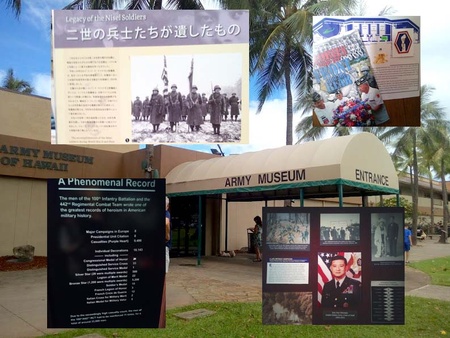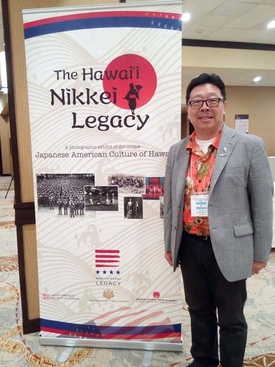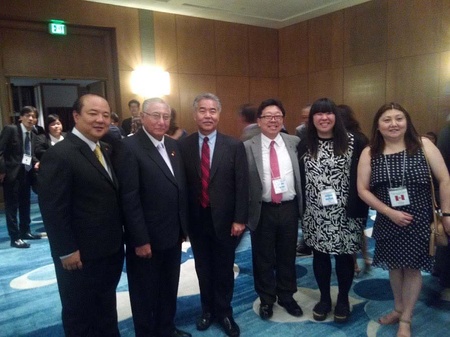In June 2018, a major event in the history of Japanese overseas migration was held in Honolulu, Hawaii. It was the "Gannenmono" ceremony celebrating the 150th anniversary of Japanese immigration to Hawaii, and was attended by Prince and Princess Akishino from Japan, and by the government, including former Self-Defense Forces officer and Vice-Minister for Foreign Affairs Sato Masahisa, and JICA President Kitaoka Shinichi. Hawaii representatives included Governor Ige, former Governor Ariyoshi, Honolulu Mayor Amemiya, Japan-U.S. Council Chairwoman Irene Hirano Inouye (wife of the late Senator Dan Inouye), and former University of Hawaii President Matsuda. This was my first visit to Hawaii, and I participated in the Convention of Japanese People Abroad, which was held at the same time as the ceremony.
It was 150 years ago, in 1868, that Japanese workers first went overseas to work in Hawaii's sugar cane fields. Japan and Hawaii had been in contact since the end of the Edo period, and the Shogunate mission "Kanrin Maru" called at Hawaii in 1860. Among the people on board were Katsu Kaishu, John Manjiro, and Fukuzawa Yukichi.
At the time, the Kingdom of Hawaii was suffering from a serious labor shortage and welcomed the acceptance of Japanese immigrants. Furthermore, it is said that they wanted to strengthen ties with Japan to counter America's aggressive diplomatic pressure. Meanwhile, negotiations were held with the Tokugawa Shogunate to send Japanese workers to Hawaii, but before the workers could be sent, the Meiji government was established. In the midst of the chaos, the new government was slow to issue permission to leave the country, so on June 20, 1868, the first group of 153 people arrived in Honolulu without proper passports. As they were the first Japanese workers to travel overseas, they are called "GANNENMONO" after the first year of the Meiji era (1868). At first, many Japanese died of illness due to the climate and environment not being suited to them.
After that, the government took the initiative in carrying out a relocation program, and thousands and tens of thousands of people migrated to Hawaii and the American mainland. In 1940, before the attack on Pearl Harbor, Japanese people made up about 40% of Hawaii's population, forming a significant community. The number of Japanese immigrants on the mainland also increased, and in the early 20th century, anti-Japanese movements grew in California and other areas due to racial discrimination, economic reasons, and a sense of crisis over the loss of jobs. In 1908, a gentleman's agreement was passed to restrict Japanese immigration, and in 1924 immigration to America was finally banned. As a result, the Japanese government gradually began to promote immigration to South America.
During World War II, the U.S. government considered Japanese or Japanese-Americans living in America, including Hawaii, to be residents of an enemy country (enemy aliens), and more than 120,000 were internment camps on the mainland. In Hawaii, many leaders and influential people from various organizations were arrested and interned, but because of the large Japanese-American population, it was deemed difficult to apply such measures to all Japanese-Americans, and they were not sent to internment camps. However, the FBI and security authorities strengthened their surveillance of Japanese-Americans. Some were dismissed from public positions or demoted in rank. Although they were not interned, their lives changed drastically and they entered a period of hardship.
When the war broke out, the Hawaii National Guard was formed by Hawaii Reserve Officer Training Corps cadets and volunteers from Honolulu High School, and was placed under the command of the US Army. Japanese Americans were then segregated and the 100th Infantry was formed. In 1943, the 442nd Regimental Combat Unit was formed for Japanese Americans, and loyalty registrations were made in the internment camps. Volunteers from Nisei were recruited, and the 100th Battalion was incorporated into the 442nd. Japanese American units were deployed to the toughest operations on the European front, and fought bravely despite great sacrifices. They are known as the most decorated Army unit in the history of the US.
Both the ceremony and the tournament in Hawaii focused on "Legacy." What have we inherited, what will we inherit, and what can we inherit in the future? I was interested in how the legacy of Japanese Americans is being passed down in Hawaii, so before the official event began, I visited the Army Museum of Hawaii in the city to see how Japanese American troops are treated and how they are valued. There is an exhibition section called "Go for Broke 100th/442nd" in the museum, which contains a detailed description of the battles on the European front and the number of medals they received under the heading "Legacy of the Nisei Soldiers." They also proudly introduced Eric Ken SHINSEKI, a Japanese American officer who served in the U.S. Army after the war. It was an exhibition that reflected the high regard for Japanese Americans.

Hawaii currently has a total population of 1.3 million, of which 200,000 (16%) are Japanese, and many Japanese are active in various fields. There are many Japanese people in the state, including current Governor David Ige, who is the second Japanese to serve as governor, lieutenant governors, some cabinet members, and senior posts in the state legislature and judiciary. Hawaii also elected Daniel Ken INOUYE, the first Japanese-American to be elected to the U.S. House of Representatives in 1959, shortly after the war, and served as a U.S. Senator for nearly half a century from 1963 until his death in 2012.
There also seem to be many successful business people. The owner of ABC Mart, which I visited almost every day during my stay, is apparently Japanese, and I have heard that many other prominent business people in the real estate, travel, and tourism sectors are of Japanese descent.

In the space in front of the hall of the Sheraton Hotel where the ceremony and other events were held, a panel called "Hawaii Nikkei Legacy" was on display. It expressed gratitude to the first and second generation who overcame various hardships to build the current community, using the word "Okagesama." I took it to mean that the current success, status, and respect of the Japanese community are all thanks to the good and bad things that have happened. The Japanese communities in Latin America have also faced many hardships, but I was reminded that there has never been such a large number of sacrifices as those made by Japanese people in America.
Although it was a short four-day stay, it was a very meaningful one. As part of the ceremony, I saw seventh and eighth generation Japanese people for the first time, who I think were descendants of the Gannenmono. After all, it is not surprising that there are eighth generation Japanese people after 150 years. I was impressed by the fact that they said that this commemorative ceremony allowed them to recognize their roots once again. Although seventh and eighth generation Japanese people may not have a strong sense of being Japanese, they said that they want to cherish the Japanese-style diligence, discipline, and politeness. Before the war, the Japanese community in Hawaii was the majority, but the war forced them to make great sacrifices and restrictions, and after the war they became a minority, but they worked hard to regain their current status and pride. It was a very educational visit to Hawaii, and I thought it was a history that I would like to share more with Japanese people in Central and South America.
© 2020 Alberto J. Matsumoto







